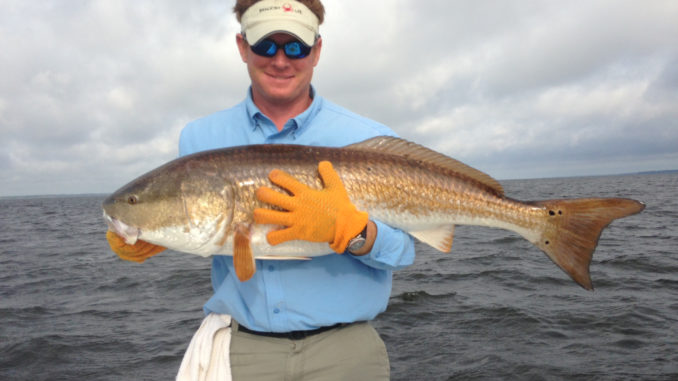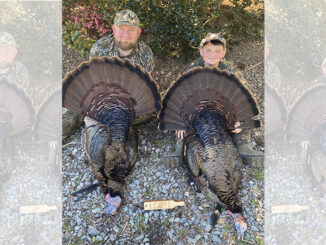
Beginning of fall run has local fishermen excited
Over the past few weeks, Mother Nature has finally brought pleasant temperatures and, most importantly, the first major wave of bull reds to the Little River jetties.
Every year, anglers relish the arrival of these trophy fish, and it’s not uncommon to boat double-digit catches. Capt. Mark Dickson of Shallow Minded Inshore Charters is currently leading the charge. With a livewell full of frisky finger mullet and a boat load of fresh anglers, Dickson’s redfish roundup at the jetties is bound to turn some heads from passing boaters over the next few weeks.
“It is just beginning to get good right now,” says Dickson (843-458-3055). “We will catch four to five one day and then maybe 10 to 15 the next day. We should have great fishing for the big reds until the end of October when the water starts to get cold.”
The arrival of the bull reds at the jetties happens to coincide with the annual mullet run. From the surf zone out into the deeper routes just off the beach, huge migrations of mullet travel through the area and around the tips of the jetties. Anglers can expect to wrangle one of these massive beasts during periods of higher water and lower flows. As compared to the falling tide at the jetties, the rising tide produces a less intense current flow and better fishing.
“The incoming tide is the best at the jetties for the big reds. We drift live mullet on the bottom using a Carolina rig with 1 ½-ounce egg sinkers,” Dickson said.
The typical Carolina rig for bull reds will have a 1 ½- to 4-ounce egg sinker, six to 12 inches of 50- to 100-pound monofilament leader and a 2/0 to 4/0 circle hook. Shorter leaders – six to eight inches – are preferred to produce less deep-hooked fish.
The best action at the jetties has been from the red/white sea buoy into the inlet to the first red interior channel marker near the first bend of the jetty rocks. While anchoring can be effective, drifting allows anglers to use less weight and ensures the bait will stay in contact with the bottom where the bull reds are located.





Be the first to comment